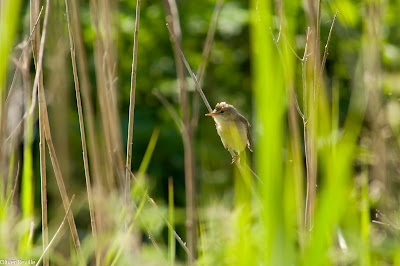The country that has captured my imagination and thoughts for years, ever since I became interested in wildlife really. I finally visited the smiling coast in November 2014 with AJ and, despite its brilliant moments, I came away feeling a little flat and almost disappointed by the experience.
Don't get me wrong, the wildlife, local people, food and climate are fantastic. It was however the behavior of the "guides" around Kotu which soured a lot of the experience for me. This went beyond mere hassle or persistence to getting us arrested, along with our friend Dave, on our first morning in The Gambia. For the rest of the week the unjust and simply disgusting way that we had been treated for simply going for a morning walk with a friend stayed with me and I have vowed never to return to the coastal strip.
 This time however is different. A week long trip on my own to the coastal lands around the village of Kartong. Monitored by Colin Cross, once of Norfolk, this area is regarded by many as the best site in The Gambia. At just 1.1 miles long by 0.8 miles wide this area is about twice the size of Titchwell RSPB here in Norfolk. To date there has been over 350 species recorded at Kartong, and with so few birders present no doubt many things have gone amiss.
This time however is different. A week long trip on my own to the coastal lands around the village of Kartong. Monitored by Colin Cross, once of Norfolk, this area is regarded by many as the best site in The Gambia. At just 1.1 miles long by 0.8 miles wide this area is about twice the size of Titchwell RSPB here in Norfolk. To date there has been over 350 species recorded at Kartong, and with so few birders present no doubt many things have gone amiss.
The area is a mixture of reedbeds, pools, thick scrub, grassland, fragmented woodland and beach zone. This mixture of habitats is a fantastic mix for birds visiting as migrants and also for the resident species. A 2 hour walk around the site can reveal many species and almost all give superb views. The site is also home to breeding White-Fronted Plover, a rare breeder in the area now.
As well as the typical and some rarer African species Kartong also attracts many Western Palearctic migrants that are more familiar to European birders. This adds to interesting array of species one can see at Kartong and means a surprise is often not too far away.
From the 19th January I will be posting daily updates from my exploration of the area. With the area to myself for the week I am hoping to bring up a surprise species or two as well as photographing as many of the species present as I can.
Next update on the 19th. Thanks!
















